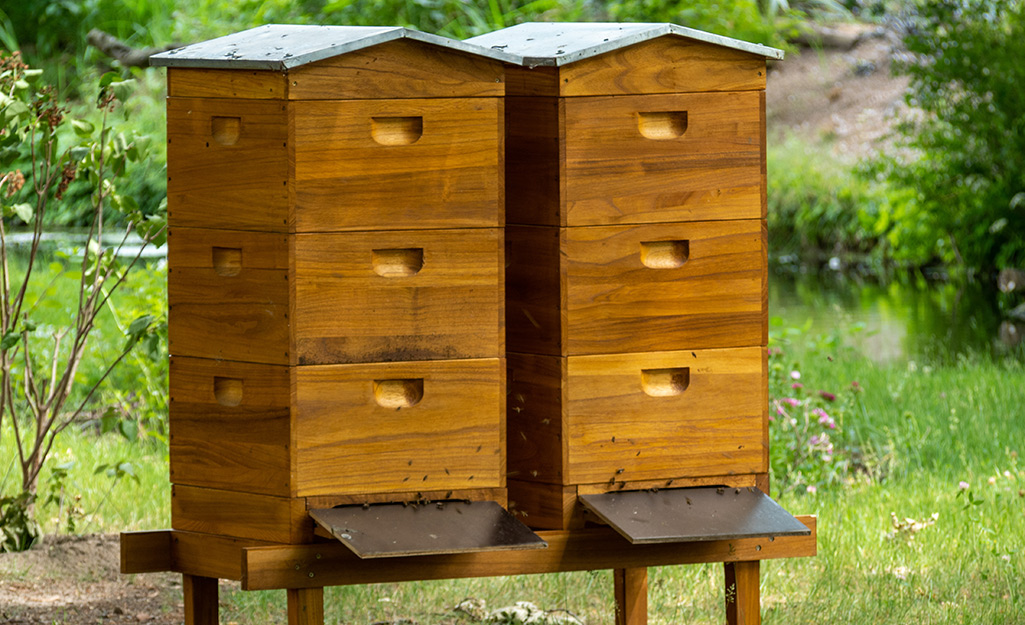Getting into backyard beekeeping feels exciting. You’re doing something meaningful for the environment, supporting pollinators, and giving yourself the chance to harvest your own honey. But here’s the thing: choosing your first hive setup can be confusing. There are too many kit options, too many opinions, and too much jargon for someone just starting out.
Searching for beehive kits for beginners is usually a sign you’re ready to take that next step — you just need help making a smart pick.
Let’s break down your best options and what actually matters when you’re getting started.
What Makes a Beginner-Friendly Beehive Kit?
A good starter kit sets you up with everything needed to get bees in the box and thriving:
- A fully assembled (or easy-to-assemble) hive
• Frames and foundations included
• Ventilation that prevents moisture build-up
• A design compatible with commonly sold bees and accessories
• Quality wood that handles Canadian weather changes
• Tools, outer covers, inner covers, and bottom boards that fit together properly
If a kit requires too much extra equipment or woodworking, it creates frustration before the bees even arrive.
Why Most New Beekeepers Choose a Langstroth Hive
There are a few different hive styles, but the Langstroth is popular for a reason:
- Standardised parts (easy to replace and upgrade)
• Scalable as your colony grows
• Straightforward inspections and honey harvesting
It’s not the only route, but it’s the most supported one for beginners in Canada. If you want to explore more styles later, you can — but starting simple gives your bees the best chance.
Top 7 Beehive Kits Perfect for Beginners
Here are reliable beginner-friendly hive kit options, each with its own personality and advantages. The right one depends on your backyard, climate, and confidence level.
1. Standard Two-Deep Langstroth Starter Kit
Great if you’re committed to growing and harvesting real honey in your first season. Two brood boxes give the colony enough space to establish strong numbers before you add honey supers later.
Best for: Anyone who wants to learn “real” beekeeping from scratch
2. One-Deep Hive With Medium Super Kit
This setup helps beginners keep inspections lighter and less intimidating. It also gives early exposure to how honey harvest boxes work.
Best for: First-timers who want honey without heavy lifting
3. Western Red Cedar Hive Kit
Cedar handles weather extremes better than most woods — it resists rot naturally. That means fewer worries during Canadian winters and spring moisture spikes.
Best for: Harsh climates or people who want a long-lasting hive
4. Hive Kit With Built-In Queen Excluder
This prevents the queen from moving into your honey supers, meaning cleaner harvests. It’s optional in beekeeping, but many beginners appreciate the simplicity.
Best for: New beekeepers who want honey-ready organization
5. All-Medium Box Kit
Medium frames and boxes are lighter. When they’re full of honey, your back will thank you. This also standardises your gear — every replacement frame fits everywhere.
Best for: Older adults or anyone wanting an easier handling experience
6. Ventilated Hive Kit with Screened Bottom Board
Airflow matters more than beginners realise. Bees can regulate heat, but humidity stresses them. A screened bottom board helps reduce pests like varroa mites too.
Best for: Humid regions or backyard beekeepers who want stronger pest control
7. Complete “Turnkey” Kit With Tools Included
If you want everything in one box, this is it: smoker, bee brush, hive tool, veil, gloves, feeders — the works. It prevents those annoying “oops, I forgot something” moments.
Best for: People who want to start immediately and avoid piecemeal shopping
Choosing the Right Hive Size for Your Space
A hive box doesn’t take up much land — roughly a small garden footprint — but the bees’ flight path matters. Here’s what to think about:
- South or southeast orientation helps bees warm up early in the day
• Keep the entrance away from walkways
• Respect neighbours’ space and comfort
• Shelter the hive from direct wind gusts
Urban beekeeping is totally possible — you’re just balancing human comfort and bee instinct.
‘Should You Buy Assembled or Unassembled?
If you enjoy DIY and own a drill, unassembled kits are usually cheaper.
If you’d prefer zero stress, pre-assembled saves time and avoids small alignment issues that can impact the bee space.
Here’s the trade-off:
| Option | Pros | Cons |
| Assembled | Precise build quality, faster setup | Higher price |
| Unassembled | Cost-effective, can learn hive parts | Requires tools and patience |
Choose based on energy level, not ego. Your bees don’t care — but your frustration level might.
Tools and Supplies You’ll Eventually Need
A hive kit is the foundation, but you’ll also want:
- Smoker (keeps bees calm)
• Hive tool (everything in beekeeping needs prying)
• Protective gear like veil and gloves
• Feeder during spring and new colony establishment
• Paint or wood treatment safe for bees (exterior only)
Most “complete kits” include these, but double-check before ordering.
Climate, Pests, and Local Support Matter More Than You Think
Your backyard isn’t the same as someone’s micro-farm in Southern California. Canadian beekeepers must think ahead:
- Winter insulation and moisture quilts
• Varroa mite monitoring
• Local nectar flow timing
• Predator protection (skunks, raccoons, wasps)
The hive you choose needs to adapt to your backyard’s realities. Look for what local beekeepers recommend — they’ve seen what works.
Final Thoughts: The Best Starter Hive Is the One You’ll Enjoy Maintaining
Your first hive kit sets the tone for years of beekeeping ahead. So choose one that matches your backyard, your climate, and your comfort zone — not just the lowest price on a website.
A great beginner hive:
- Makes inspections smooth
• Gives bees the space to grow
• Doesn’t overwhelm you
• Supports healthy colony management
If you take care of your bees, they will take care of you — with honey, pollination, and a new appreciation for how nature actually works.
When you’re ready, pick a hive you feel confident managing, get your hands into a mentorship group or local club, and start watching one of the most important species on the planet thrive in your backyard.

